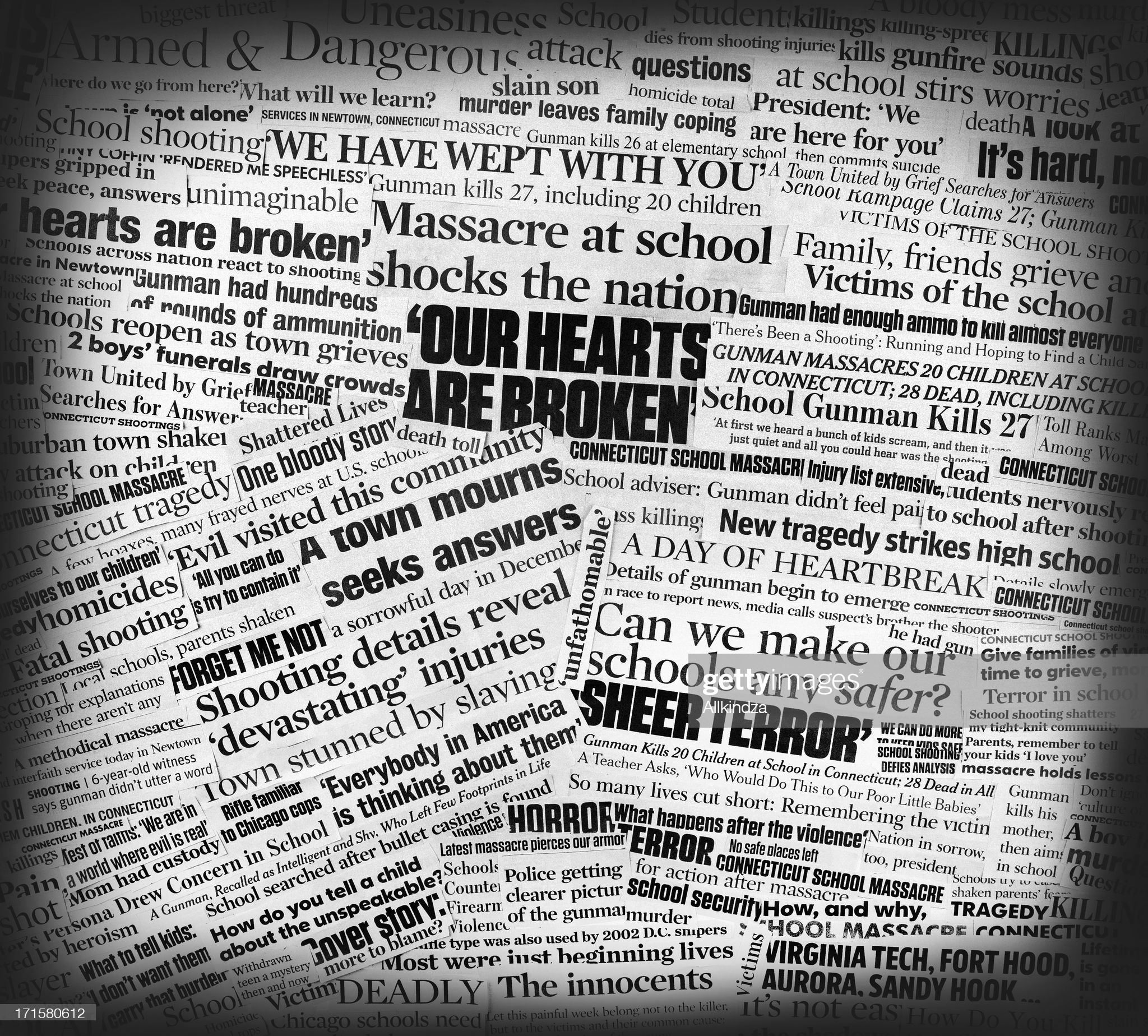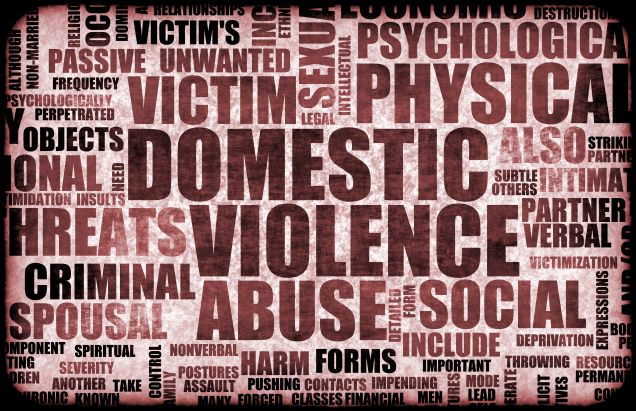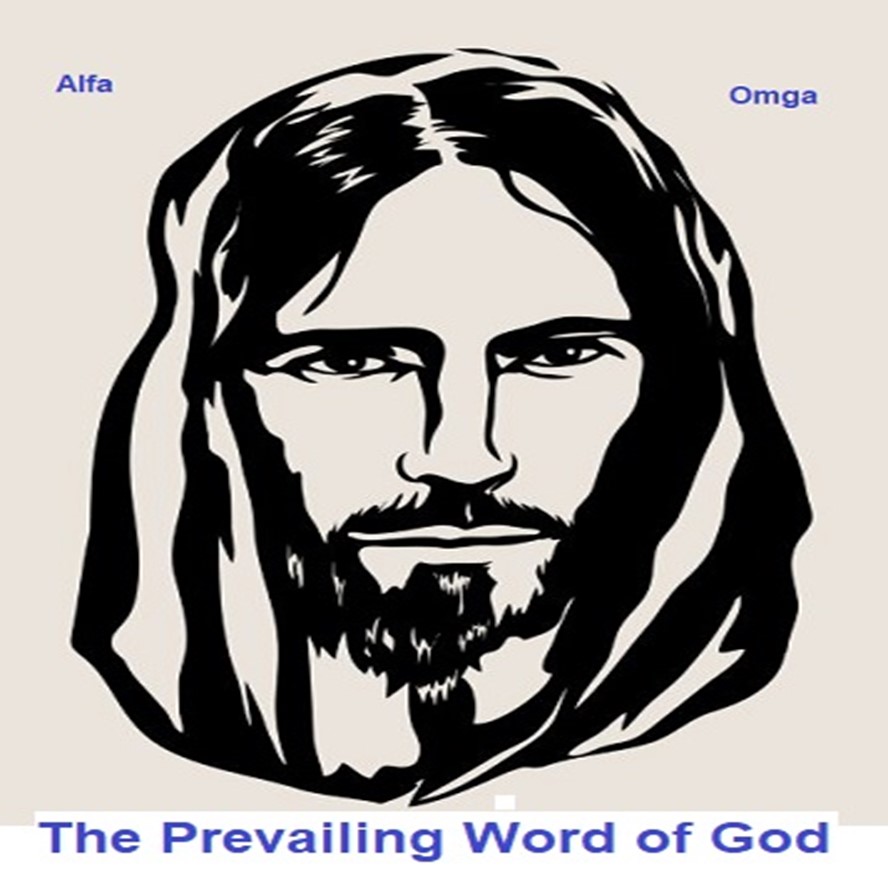
Monsters Among Us Hiding in Plain Sight
“Deductive Criminal Profiling: Comparing Applied Methodologies Between Inductive and Deductive Criminal Profiling Techniques”
________________________________________
The mental health community christened the first psychological “syndrome” in 1980, when Posttraumatic Stress Disorder (PTSD) was officially recognized by inclusion in the Diagnostic and Statistical Manual of Mental Disorders (DSM-III). Since that time, the investigative term “profile” has slowly become synonymous with the psychological term “syndrome” in the eyes of the legal community. The process of criminal profiling in its original form, as taught by Howard Teten and Pat Mullany at the FBI beginning in 1969, was completely different in origins and methodology from the construct of the psychological syndrome. With time, however, the two terms “profile” and “syndrome” have been wrongfully confederated because of the way some profiles are constructed, and the subsequent litigation [1], [2].
As the above infers, not all profiling methodology is the same, due largely to the fact that not all profilers are equally trained or able. In fact, this author will propose that there are essentially two very different types of profiling being done by criminal investigators and criminologists in the United States. The first profiling method will be termed Inductive Criminal Profiling, and is related conceptually to the construction of psychological syndromes and subsequent syndrome evidence. The second, less common, method of profiling will be termed Deductive Criminal Profiling. The purpose of this work is to overview the nature of Deductive Criminal Profiling, and demonstrate how its origins, assumptions, and methodology are fundamentally different from the origins, assumptions, and methodology of Inductive Criminal Profiling, and by inference syndrome evidence.
________________________________________
Inductive Criminal Profiling & Syndromes
For legal purposes, according to Moenssens et al [3], a syndrome or a profile is “a set of behavioral indicators forming a very characteristic pattern of actions or emotions that tend to point to a particular condition.” (note an emphasis on pointing to a condition, lending itself to purposes of treatment).
A more useful description comes from State of Oregon v. Lawson [4], where the defense tried to introduce expert testimony stating that their client, Mr. Lawson, did not match the profile of a sex offender, and by extension of that logic could not therefore be one. The court in that case found that “Whether it is labeled a ‘syndrome’ or a ‘profile’, the type of evidence…involves comparing an individual’s behavior with the behavior of others in similar circumstances who have been studied in the past.”
An Inductive Criminal Profile is one that is generalized to an individual criminal from initial behavioral and demographic characteristics shared by other criminals who have been studied in the past. It is the product of incomplete, statistical analysis and generalization (very often without comparison to norms), hence the descriptor Inductive. This author takes the descriptor from the phrase Inductive Statistics, which is the branch of statistics involving generalizations, predictions, estimations and decisions from data initially presented [5].
The datasets currently used to compile and statistically generalize Inductive Criminal Profiles are collected largely from three sources:
1. Formal and informal studies of known, incarcerated criminal populations, and the inherent clinical and non-clinical interviews upon which those studies are based.
2. Practical experience, from which isolated anecdotal data is recalled by the profiler; and
3. Public data sources, including the popular media (for example, the FBI readily admits that newspaper articles are collected by its personnel and used to fill out its computerized database of violent criminal offender activity in the United States).
Inductive Criminal Profiling: The process of profiling criminal behavior, crime scenes, and victims from the known behaviors and emotions suggested by other criminals, crime scenes, and/or victims.
In essence, as the term suggests, this is reasoning from initial statistical data to specific criminal offender behavior. In any event, Inductive Criminal Profiling is generally the result of some kind of statistical analysis, or finds it’s reasoning in cases outside of the case at hand.
Example of the logic: 80% of known serial killers that attack college students in parking lots are white males aged 20-35 who live with their mothers and drive Volkswagen Bugs– Our offender has attacked at least three female college students on separate occasions; our offender has attacked all three victims in parking lots.
Therefore, our offender, who is part of this large group who fit this “profile” called “serial killers” is a white male aged 20-35, lives with his mother, and drives a VW Bug.
The advantages of the Inductive Criminal Profiling model are readily apparent. Foremost is that Inductive Profiling is a very easy tool to use, for which no specialized forensic knowledge, education, or training in the study of criminal behavior or criminal investigation is required. Additionally, general profiles can be assembled in a relatively short period of time without any great effort or ability on the part of the profiler. The result is often a one- or two-page list of unqualified characteristics. These generalizations can accurately predict some of the non-distinguishing elements of individual criminal behavior, but not with a great deal of consistency or reliability.
There are currently several separate initiatives under way in both the United States and Canada to automate part or all this process with databasing tools and neural computer networks.
The major disadvantages of the Inductive Criminal Profiling model are equally apparent to the critical thinker. Firstly, the information itself is generalized from limited population samples, and not specifically related to any one case, therefore it is not by its nature intended for reconstructing a “profile” of an individual person. It is a generalized set of representations, averaged from a small group of individuals who may or may not have been appropriately sampled, depending on the knowledge and ability of the person collecting and assembling the data. Secondly, and perhaps most noted, is that Inductive profiles are generalized and averaged from the limited data collected only from known, apprehended offenders. An Inductive Criminal Profile does not fully or accurately consider current offenders who are at large, therefore it is by its very nature missing datasets from the most intelligent or skillful criminal populations; the criminals who are successful in continually avoiding detection by law enforcement. A third major disadvantage is that, as with any such generalization, an Inductive Criminal Profile is going to contain specific inaccuracies that can and have been used to implicate innocent individuals. This occurs when an Inductive Criminal Profile is used as some sort of infallible predictive measure by an unprofessional, trigger-happy profiler. Recent examples include the 1996 case of Richard Jewell in the “Olympic Park Bombing” and, also in 1996, the Colin Stagg profile debacle in Great Britain.
Assumptions of the Inductive Criminal Profiling model include:
• Small groups of known offenders, who commit the same types of crimes as unknown offenders, have commonly shared individual characteristics that can be accurately generalized back to initially similar individual unknown offenders.
• Offenders who have committed crimes in the past are culturally similar to current offenders, being influenced by at least similar environmental conditions and existing with the same general and sometimes specific motivations.
• Individual human behavior and characteristics can be generalized and even predicted from the initial statistical analysis of characteristics and behavior in very small samples.
• Behavior and motivation do not change within an individual over time, being static, predictable characteristics.
Inductive Profilers include the following groups of professionals, who have various backgrounds:
• FBI and ex-FBI profilers. Current FBI profiles are on average less than a page long and offer no explanation for the content of the profile. Most law enforcement agencies that this author has discussed the issue with have had little or no use for those types of profiles. Nor do most courtrooms.
• Forensic Psychologists and Forensic Psychiatrists, who rely solely on clinical personality measurements such as the MMPI, and the interview process, when formulating any kind of criminal personality profile.
• Many of the law enforcement profilers who have received FBI training, including Georgia Bureau of Investigation, ATF, and various state and local detectives.
• Criminologists: a criminologist is defined as someone who studies criminal behavior. It does not imply training, education, or experience. The term criminologist generally refers to someone who does scholarly, scientific and professional study concerning the etiology, prevention, control, and treatment of crime and delinquency, including the measurement and detection of crime, legislation, and the practice of criminal law, the law enforcement, judicial, and correctional systems. It is a category that, despite its ambitious definition, can include almost anyone in actual application.
The professional backgrounds of those listed does not necessarily include forensic training in criminal psychology, abnormal psychology, or psychopathology, and certainly does not imply any kind of experience with investigating violent serial criminals. For example, most people are not aware that FBI agents do not have jurisdiction at any homicide unless it occurs in a federal building or on an Indian Reservation, giving most FBI agents no applied experience investigating this type of crime whatsoever.
________________________________________
Deductive Criminal Profiling
A descriptive, applied definition of the Deductive Criminal Profiling model, according to this author, is: “The process of interpreting forensic evidence, including such inputs as crime scene photographs, autopsy reports, autopsy photographs, and a thorough study of individual offender victimology, to accurately reconstruct specific offender crime scene behavior patterns, and from those specific, individual patterns of behavior, deduce offender characteristics, demographics, emotions, and motivations.”
Note the heavy emphasis on an informed forensic reconstruction, and the exclusion of information from other similar offenders, or other similar offenses.
A Deductive Criminal Profile is one that is deduced from the careful forensic examination and behavioral reconstruction of a single offender’s crime scene(s). After the offender’s behaviors have been reconstructed, the crime scene characteristics are analyzed, and the victim characteristics are analyzed. From those combined characteristics, a profile with the characteristics of the individual who could have committed that specific offense(s), with that specific victim(s) under the conditions present at that specific crime scene(s) is deductively inferred. It is a forensically and behaviorally contained process. The process of deductive profiling is most appropriately termed Behavior Evidence Analysis, and depends on the analyst’s abilities to recognize patterns of behavior within a single offender to deduce meaning. Offender emotions during the offense, individual patterns of offense behavior, and offender personality characteristics are deduced from that particular offender’s crime scene behavior and victimology only.
Deductive Criminal Profiling: The Behavioral Evidence Analysis a specific criminal, crime scene(s), and victim(s) exclusively from forensic evidence relating to the crime scene(s) and victim(s) of that offender alone.
Example of the logic: The body of a female victim is found nude in a remote forest location with 4 shallow, careful incisions on the chest, cutting across the nipples. The victim’s genital areas have all been removed with a sharp instrument. Petechiae are evident in the eyes, neck and face above pattern compression on the neck. No blood is found at the crime scene. No clothes are found at the crime scene. The victim bears ligature furrows around her wrists with abraded contusions but no ligature is present. Fresh tire impressions are found in the mud approximately 20 yards from where the body is located.
Therefore, the offender in this particular offense bound the victim to restrain her while she was still alive indicated by the abrasions around the wrists associated with struggling. Our offender removed the ligature before disposing of the body, indicated by the fact that we didn’t find it at the scene. The victim was likely asphyxiated with a material ligature about the neck, indicated by the pattern compression and the petechiae. The location where the body was found is a disposal site and not the actual location of the offense indicated by the fact that no blood was present at this location. The offender has a vehicle consistent with the tire impressions and is mobile. All of these details together indicate a competent, intelligent offender who is likely able to sustain employment, and is very likely a sexual sadist. This is deductively suggested by the vehicle, the use of a secondary scene to dispose of the body to avoid transfer evidence, the removal of the victim’s genitals, and the deliberate cutting to the victim’s nipples intended to cause pain but not seriously injure.
The data used to infer a Deductive Criminal Profile for a particular criminal includes the following:
1. Forensic Evidence: A full equivocal forensic analysis must be performed before profiling can begin, to ensure the integrity of the behavior and the crime scene characteristics that are to be analyzed. Nothing can be assumed by the profiler.
2. Crime Scene Characteristics: Crime scene characteristics are determined from all forensic reports, all forensic analysis, and all forensic documentation which provides the nature of the interaction between the victim(s), the offender, and the location(s) of the offense during the occasion of a specific offense. In cases involving a related series of offenses, such as in serial rape, or serial homicide, crime scene characteristics are determined individually and analyzed as they evolve, or fail to evolve, over time. An offender’s crime scene characteristics, in a single offense or over multiple offenses, can lend themselves to inferences about offender motive, modus operandi, and the determination of crime scene signature.
3. Victimology: Victimology is the thorough study and analysis of victim characteristics. The characteristics of an individual offender’s victim population of choice, in a single offense or over time, can lend themselves to deductive inferences about offender motive, modus operandi, and the determination of crime scene signature. In Deductive Profiling, almost as much time is spent profiling each victim as the offender responsible for the crime(s).
The Advantages of the Deductive Criminal Profiling
The advantages of the Deductive Criminal Profiling model are very important. This model requires specialized education and training in forensic science, crime scene reconstruction, and wound pattern analysis. Because of this requisite specialized knowledge, Deductive Criminal Profiles tend to be more specific than Inductive Criminal Profiles, assisting greatly in the major goal of the profiling process, which is to move from a universal set of suspect characteristics to a more unique set of suspect characteristics.
Deductive Criminal Profiling is also useful for thoroughly establishing Modus Operandi behavior, as well as offender signature behavior, which assists in the linkage of seemingly unrelated crimes. According to Geberth [6], the Modus Operandi, or MO behavior, or method of operation, is a dynamic, learned behavior, changing over time, as the offender becomes more experienced. It involves only those actions that are necessary to commit the offense.
Signature behavior, or the signature aspect of criminal behavior, as Geberth [7] defines it, is comprised of those behaviors not required to commit the offense. Signature is comprised of significant personality identifiers that distinguish the nature of the offender’s crime scene methodology.
These significant and highly individualized personality identifiers are evident in such things as:
• When an offender repeatedly engages in a specific order of sexual activity;
• When an offender repeatedly uses a specific type of binding;
• When an offender inflicts similar types of injuries to different victims;
• When an offender displays the body in a certain manner for shock value;
• When an offender tortures and/or mutilates his victims, and/or engages in some other form of specific ritualistic behavior.
Another very tangible advantage of the Deductive Criminal Profiling method is that, because it so thoroughly explores victimology, and the nature of the interaction between the victim(s), the crime scene(s), and the offender, it can very pointedly demonstrate an individual offender’s motivations in even the most bizarre or seemingly senseless offenses. As Geberth insightfully reminds us in his foundational work Practical Homicide Investigation, 3rd. Ed., “No one acts without motivation.” Deductive Criminal Profiling techniques explore offender actions through the physical evidence, through the victimology, and through the crime scene as the primary behavioral and motivational documentation, and illuminate that particular offender’s motivation. The whole profile is logic statement, based solidly on the arguments made through an analysis of behavior patterns.
Also, due to this same thoroughness, learned or experiential generalizations can be kept from obscuring or misleading investigations. Investigators with a lot of years on the job, or a lot of experience investigating a particular type of crime, tend to formulate theories about a case early on. Instead of investigating the case, they may instead spend their efforts attempting to prove a theory. Deductive Criminal Profiling precludes theory generation, and subsequent bruised egos, until a full investigative analysis has been done.
The final major advantage of the Deductive Criminal Profiling method is that it examines behaviors of individual offenders as they occur over time. Change and growth are allowed for, analyzed, and recompiled back into the criminal profile. As something like offender MO behavior or motivations change or evolve over the course of multiple offenses in an offender’s career, it is noticed and it used to better understand the offender.
The disadvantages of Deductive Criminal Profiling are somewhat few, but well worth noting. First is that it is not a quick fix or a cure all; it requires a great deal of effort and multi-disciplinary skill on the part of each member of the investigative team. Second, because it is such an intensive process, it can be extremely emotionally exhausting. Investigators that learn to use these techniques should take care to be emotionally grounded individuals and not be afraid to discuss any emotional difficulties with those close to them. And third, a Deductive Criminal Profile cannot not point out a specific known individual and say with confidence that they are likely responsible for a certain crime or series of crimes unless that offender’s unique signature is known and established.
Assumptions of the Deductive Criminal Profiling method include:
• No offender acts without motivation.
• Every single offense should be investigated as its own unique behavioral and motivational existent. Given the nature of human behavior, no two cases are really
ever alike.
• Some offenders have unique motivations and/or behaviors that should be individuated from other similar offenders.
• All human behavior develops uniquely, over time, in response to environmental and biological factors.
• Criminal MO behavior can evolve over time and over the commission of multiple offenses.
• A single offender is capable of multiple motives over the commission of multiple offenses, or even during the commission of a single offense.
• Statistical generalizations and experiential theorizing, while sometimes helpful, are incomplete and can ultimately mislead an investigation, and encourage investigative laziness. When we think that we have all of the answers in a case, not only might we only collect evidence that fits those answers, we might think that a thorough investigation is no longer requisite at all.
________________________________________
Conclusions
The Inductive Profiling model, due largely to the lack of uniform training and education on the part of those who use it, has proven time and time again to be an unreliable source of investigative guidance. No standard terminology exists to describe offender behavior, and no classifications that have been developed have been rigorously validated, such as the crime scene classification efforts in the Crime Classification Manual [8]. Furthermore, those classifications have been developed using the same structure and philosophy as the DSM, despite the intention that the DSM be used for the purposes of treatment, and not being designed for the purposes of criminal investigation. The adoption of this clinical model, then, serves no other real purpose than to lend pseudo-clinical credibility to the classification. The model arguably does not serve the purpose that it was designed for.
Furthermore, initial statistical analysis based on unproven classifications and non-uniform terminology are no replacement for a thorough forensic reconstruction, crime scene analysis, and victimological assessment in either a criminal investigation or in a court of law. Given this fact, and given the extensive liability of police departments in high profile cases involving overzealous investigators armed with Inductive Profile evidence, and the general inadmissibility of Inductive “Profile” evidence in a court of law, the practice of teaching investigators purely Inductive Profiling methods should end.
The multi-disciplinary Deductive Profiling method, though more time consuming in the investigative end, will prove to be more effective because of its usefulness as an investigative guide, its competency at linking crimes, and because of its very high probative value in terms of thoroughly establishing signature and motivation. In short, the Deductive Profiling method encourages deliberation, competency, thoroughness, and requires a high degree of intra- and extra-departmental cohesiveness and communication. The Inductive Profiling method encourages egocentricity, investigative short-cuts, and has been used in the past to replace a competent forensic investigation into fact. In the past, when this author has attempted to explain the Deductive Profiling process to individuals involved in criminal investigations, those investigators have said, “It sounds like you’re trying to trick us into doing more work.” To which this author has always responded, “You’re right.”
________________________________________
ENDNOTES
1. United States v. Banks, 1988
2. United States v. Sokolow, 1989
3. Moenssens, A., Starrs, J., Henderson, C., & Inbau, F., Scientific Evidence in Civil and Criminal Cases, 4th Ed., (New York: Foundation Press, 1995), pp.1146-1147
4. State of Oregon v. Lawson, 1994
5. The American Heritage Dictionary, 2nd Ed., (Boston: Houghton Mifflin, 1982)
6. Geberth, Vernon “The Signature Aspect in Criminal Investigation,” Law and Order, November, 1995, pp.45-49
7. Ibid.
8. Burgess, A. G., Burgess, A. W., Douglas, J., Ressler, R. Crime Classification Manual, Reprint Ed., (New York: Lexington Books, 1992) pp. 21-22
________________________________________









